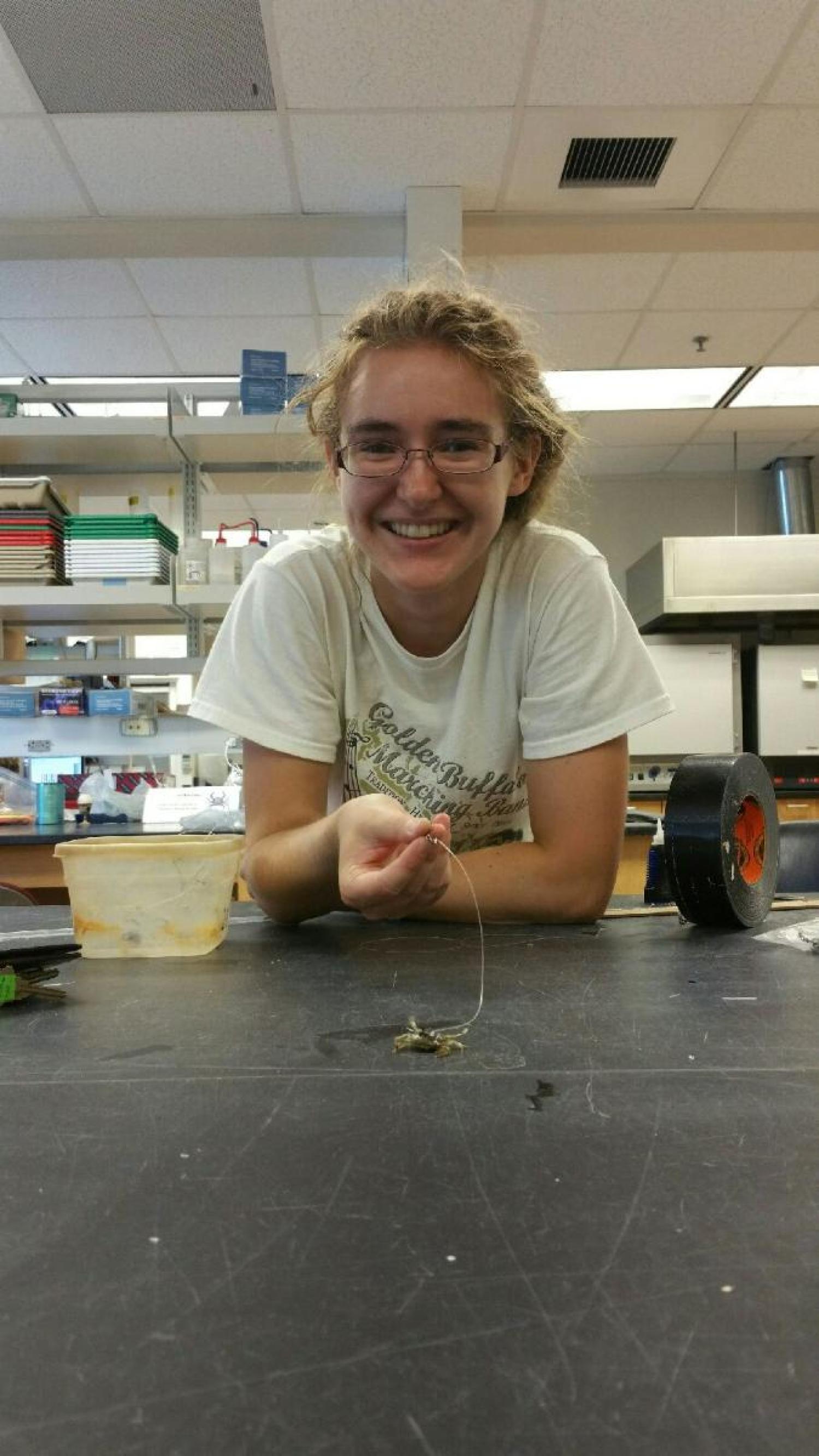Climate change: don’t be blue, be crabby! - Kylie Smith
I have always had a passion for marine life, and I was fortunate to take marine biology during senior year at Monarch High School. However, I was unsure what to study at CU Boulder and initially considered a degree in Molecular, Cellular & Developmental Biology for cancer research. As part of the Baker RAP at CU, I gained my first research experiences in the Florida Keys with my incredible mentors, Dr. Heidi Souder and Dr. Carol Kearns. During freshman year, I quantified man-made debris found along part of the Long Key State Park coastline. For a sophomore independent study project, I visited The Turtle Hospital in Marathon, Florida to understand the anthropogenic factors that affect sea turtles. These experiences in the Florida Keys made me realize that I wanted to study marine ecology and help conserve marine life, so I declared a major in Ecology and Evolutionary Biology and a minor in Atmospheric and Oceanic Sciences.
During the summer of 2016, I was a Research Experiences for Undergraduates (REU) Intern at the Virginia Institute of Marine Science. I studied juvenile blue crab (Callinectes sapidus) survival in sand and simulated seagrass habitats. Seagrass provides essential nursery habitat for several juvenile invertebrates (e.g. blue crabs) and fishes. Eelgrass (Zostera marina) is declining in the Chesapeake Bay because it has a low tolerance to warm temperatures, whereas widgeon grass (Ruppia maritima) has a higher tolerance to warm temperatures and will likely remain in Chesapeake Bay as the global climate continues to warm. However, it is not well understood if juvenile blue crab survival differs between eelgrass and widgeon grass habitats – if there isn’t a difference, widgeon grass could ultimately replace eelgrass as the Chesapeake Bay continues warming. I set out to answer this question by constructing artificial eelgrass and widgeon grass meshes and placing them in tanks with flowing river water. Some tanks were solely filled with sand as controls. Tethers were attached to juvenile crabs to estimate their survival, and they were secured in tanks containing seagrass and sand. Adult blue crabs or striped burrfish (Chilomycterus schoepfi) were introduced as predators, and juvenile crab status (alive/dead) was checked periodically. The initial plan was to secure my meshes in the field, but the strong currents ripped three of them out of the sediment never to be seen again. This was a valuable learning experience as I had to quickly come up with an alternative experiment using tanks – I learned that many field experiments do not end up working out as planned. I am fortunate to be able to develop my REU into an honors thesis with the support of my thesis committee, and so far it has been a great experience!



